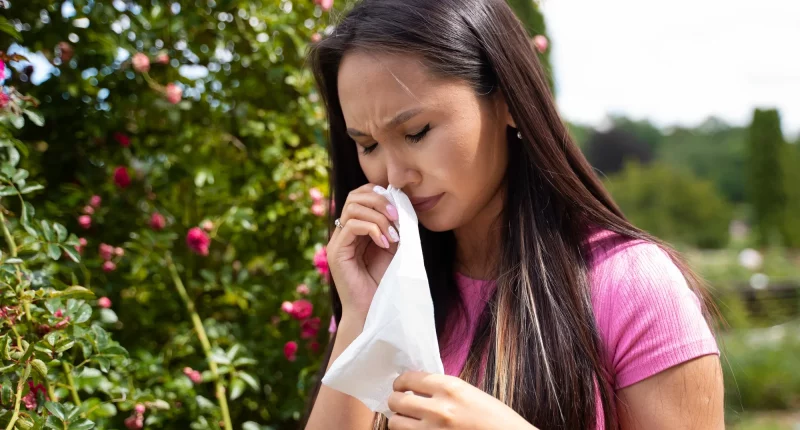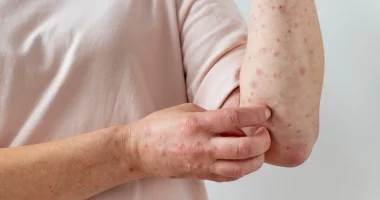Avian flu, commonly known as bird flu, is caused by specific influenza viruses that infect birds. These viruses usually stay in birds and rarely infect humans.
One type of virus that led to bird flu is known as H5N1. It can lead to severe flu in humans and has a mortality rate at the highest level. However, as stated by the Centers for Disease Control and Prevention, it’s uncommon for H5N1 to spread from person to person.
Until now, H5N1 hasn’t changed genetically to infect easily amid humans. Health authorities closely monitor it because of the severe illness it can cause. About 60% of people infected with H5N1 have died from it.
The first known cases of H5N1 in humans were reported in Hong Kong in 1997. Since then, there have been over 700 reported cases in Asia, Africa, and Europe. Countries like Vietnam, Indonesia, and Egypt have had the most cases.
Is there going to be a worldwide outbreak?
Whether the H5N1 virus could cause a pandemic is uncertain. Normally, this virus doesn’t spread easily from birds to humans, and it’s even difficult for it to pass between people.
But, if someone already has the seasonal flu and then gets infected with H5N1, the viruses might mix their genetic material. This could potentially make H5N1 better at spreading among humans.
If a new strain of bird flu develops those spreads easily among people, it could lead to severe consequences.
Currently, regulating the transmits of bird flu in both humans and animals is crucial. This helps prevent the virus from gaining the ability to spread widely and causing a pandemic.
Symptoms
H5N1 bird flu in humans can lead to severe symptoms. The virus has an incubation period, which is the time from infection to when symptoms appear, estimated at most to be 7 days, typically occurring between 2 to 5 days after infection. During this period, the virus can be contagious.
Symptoms of H5N1 in humans often start with common flu signs like fever (above 100.4ºF or 38ºC), muscle aches, and cough. Additional symptoms can vary widely in severity, ranging from a sore throat, hoarse voice, and extreme tiredness, to gastrointestinal issues like stomach upset, diarrhea, nausea, and vomiting. Some may experience abdominal or chest pain, a change in mental state, and in severe cases, seizures.
Respiratory problems are common in severe cases of H5N1, including difficulty breathing and pneumonia, which can lead to rapid deterioration of health. As stated by the WHO (World Health Organization), shortness of breath typically occurs about 5 days after the initial symptoms shown. In critical situations, individuals with H5N1 may face respiratory failure and multiple organ damage, which can be fatal.
Causes
Human infection with H5N1 bird flu typically occurs through direct contact with infected birds. This can happen when people handle birds containing the virus or come into contact with their feces or secretions. Activities such as preparing infected poultry for cooking, butchering or slaughtering birds, managing birds for trading, or visiting markets where live birds increase the risk of infection. Although rare, the virus can also spread between humans.
The virus enters the body through the mouth, nose, or eyes. It’s possible for some individuals to become infected without direct exposure to infected birds. Importantly, consuming properly cooked poultry or eggs does not transmit the virus. To ensure safety, poultry should be cooked until its internal temperature reaches at least 165º F (74º C), and eggs should have firm whites and yolks.
Bird feces can contain the H5N1 virus, potentially contaminating various surfaces such as equipment, shoes, vehicles, feed, clothing, dust, soil, and water. Additionally, the virus can be carried on the bodies, particularly the animals’ feet. These factors highlight the importance of proper hygiene and precautions when handling birds or being in environments where they are present.
Diagnosis
Early determination of H5N1 avian flu is crucial for better treatment outcomes. To diagnose the infection, doctors consider the individual’s signs and look for symptoms that suggest bird flu. They inquire about recent travel history and any exposure to birds, as these factors can indicate potential exposure to the virus.
A key part of diagnosis involves collecting a respiratory specimen, such as a nose or throat swab, which is then sent to a laboratory for analysis. This sample is most accurate when taken within the first few days of illness onset.
Since 2009, the FDA has approved a test called AVantage A/H5N1 flu test. It detects the H5N1 virus by finding a specific protein called NS1. This test aids in confirming the diagnosis.
Given that H5N1 avian flu is uncommon, doctors typically consider this diagnosis only if the person has had direct exposure to birds or has recently been in an area where H5N1 infections are known to occur. This cautious approach ensures accurate diagnosis and appropriate management of the infection.
Treatment
Treatment for H5N1 avian flu focuses on using antiviral medications to slow down the virus’s replication and improve patient outcomes, as stated by the World Health Organization. These medications, such as oseltamivir also known as Tamiflu, are most effective when administered within 48 hours of symptom onset, although they may still be beneficial after this window to enhance the individual’s chances of recovery, given the high mortality rates associated with the virus.
The standard dosage of Tamiflu is 75 mg for individuals aged 13 years and older, with adjusted dosages for younger children or those with kidney problems. A typical treatment course spans 5 days, but doctors may extend this duration for severely ill patients or those with compromised immune systems. Gastrointestinal issues like diarrhea, abdominal pain, or vomiting can affect the absorption of Tamiflu, potentially reducing its effectiveness in some cases.
There are reports suggesting that certain strains of H5N1 avian flu might show resistance to antiviral treatment. Therefore, individuals diagnosed or suspected of having avian flu are advised to stay isolated either at home or in a hospital setting to prevent further spread of the virus.
In addition to antiviral medication, healthcare providers recommend supportive care measures such as rest, adequate fluid intake, a balanced diet, and medications to manage symptoms like fever and pain. Problems like bacterial pneumonia are common in severe cases of H5N1 avian flu, requiring treatment with antibiotics and possibly supplemental oxygen to aid recovery.
Prevention
Preventing the spread of bird flu involves community preparation and personal precautions. While it’s challenging to stop bird flu entirely, authorities can monitor bird migration patterns to anticipate potential outbreaks and prepare accordingly.
Individuals can play a role in minimizing the infect of bird flu by practicing good hygiene. This includes regular handwashing with soap and warm water, especially before and after utilizing the washroom, managing food, or coughing. When coughing or sneezing, it’s best to cover the mouth with a tissue or elbow to prevent spreading the virus. Used tissues should be disposed of carefully to avoid contamination of surfaces.
Anyone experiencing symptoms of bird flu should isolate themselves from public places and minimize contact with others whenever possible. It’s important to note that while the seasonal flu vaccine is beneficial for preventing common flu strains, it does not provide protection against H5N1 avian flu, as highlighted by the WHO.
Summary
In areas where there are confirmed spread of H5N1 avian flu, it’s crucial for people to be cautious. If they notice signs, particularly if they manage birds often, they should seek medical help right away.
This flu can lead severe signs and has a high chance of being fatal. However, it doesn’t spread easily between people, so the chance of a widespread widespread is low.
Currently, there isn’t a vaccine for this flu. To reduce the risk of getting or spreading the virus, it’s important to regularly wash hands, isolate if feeling sick, and cough into a tissue or elbow. These simple steps can make a big difference in staying healthy.









